The Uyuni Salt Flats in Bolivia are a breathtaking natural wonder, offering a surreal landscape that transforms with the seasons. This unique destination captivates travellers with its vast white expanse, geological significance, and cultural richness.
The Uyuni Salt Flats in Bolivia are among the most spectacular natural landscapes in the world. Known locally as "Salar de Uyuni," this immense salt desert stretches across 10,582 square kilometres, making it the largest salt flat on the planet. Located in the Potosí and Oruro departments in southwestern Bolivia, the region sits at an altitude of 3,656 meters, offering visitors an unparalleled visual and sensory experience.
Uyuni's landscape transforms dramatically depending on the season. The dry months reveal endless salt crust formations with unique geometric patterns, while the rainy season floods the surface, creating a mirror effect that perfectly reflects the sky. This stunning natural phenomenon draws travellers from across the globe who come to witness the vastness of the salt flats and experience the serene beauty of this remote destination.
However, Uyuni is much more than just a scenic marvel. It is also a place of geological and economic importance, home to one of the world's largest lithium deposits. The region holds deep cultural significance as well, with Indigenous Aymara communities maintaining a strong connection to the land. This article explores the unique aspects of the Uyuni Salt Flats, including its location, best visiting times, nearby attractions, cultural insights, and essential travel tips. Whether you seek adventure, cultural immersion, or simply a remarkable travel experience, Uyuni is a destination that leaves a lasting impression.
Let's dive into what makes this place so special, starting with an introduction to Uyuni.
Geological significance
Uyuni is a breathtaking sight, but its geological importance is equally remarkable. This salt flat was formed as a result of transformations between several prehistoric lakes. The area is covered with a thick crust of salt, which is rich in minerals like lithium, sodium, potassium, and magnesium.
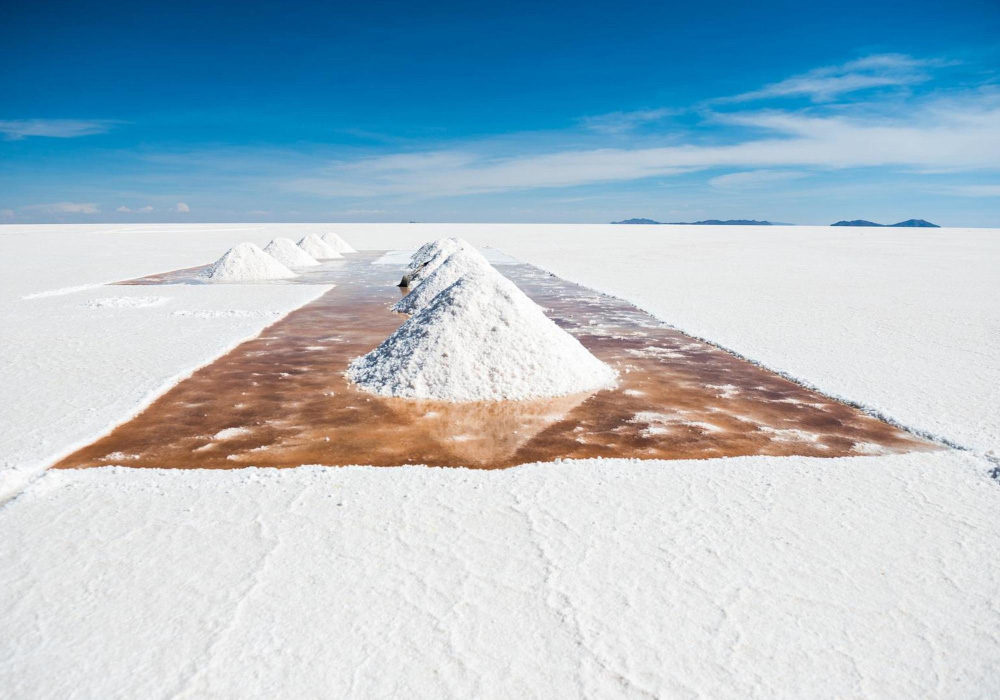
Here are some key points about its geological importance:
- Lithium reserves: Uyuni holds about 7% of the world's lithium reserves. This metal is crucial for making batteries for electric vehicles and other electronics.
- Salt crust: The salt crust varies in thickness, ranging from a few centimetres to several meters.
- Geological history: The flat was part of a giant prehistoric lake called Lake Minchin, which dried up over thousands of years.
The geological processes that led to the formation of the salt flats are fascinating. The salts and minerals were left behind as the water evaporated, creating a unique landscape. Scientists and geologists study this area to understand more about these processes and the Earth's history.
In summary, Uyuni is a treasure trove of natural wonders and scientific insights. Its stunning landscape and rich mineral deposits make it a place of both beauty and importance.
The best time to visit
Discovering the Uyuni Salt Flats in Bolivia is a mesmerizing experience. The vast white desert stretches as far as the eye can see, creating a surreal landscape. But timing your visit is crucial. The best time to visit depends on what you want to see. Both the dry and wet seasons offer unique and unforgettable experiences.
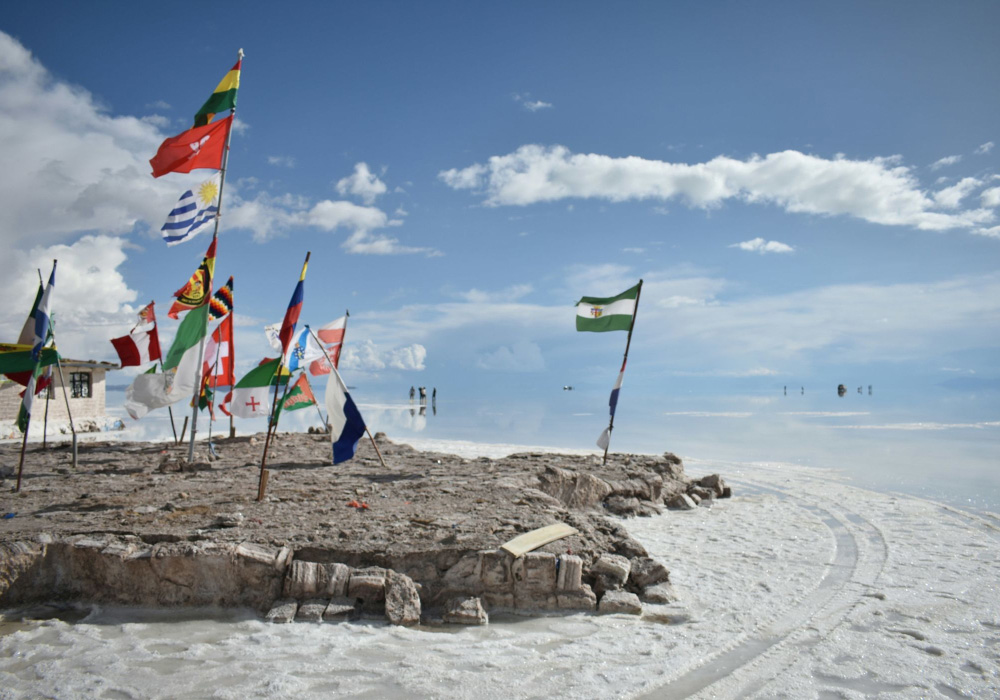
Dry season highlights
The dry season, which runs from May to November, is a popular time for visitors. The salt flats are dry and firm during these months, making them perfect for exploring. The endless white crust creates an otherworldly landscape.
Here are some highlights of the dry season:
- Clear skies: The weather is generally clear, offering stunning views of the salt flats and surrounding mountains.
- Easy access: The dry conditions make it easier to drive and walk on the flats.
- Photography: The flat, white surface creates amazing opportunities for perspective photos.
During the dry season, temperatures can drop significantly at night, so pack warm clothing. A typical day might look like this:
| Time | Activity |
|---|---|
| Morning | Sunrise photography |
| Midday | Explore the flats |
| Afternoon | Visit nearby attractions |
| Evening | Sunset views |
Wet season wonders
The wet season, from December to April, transforms the salt flats into a giant mirror. When it rains, a thin layer of water covers the surface, reflecting the sky and creating a stunning visual effect.
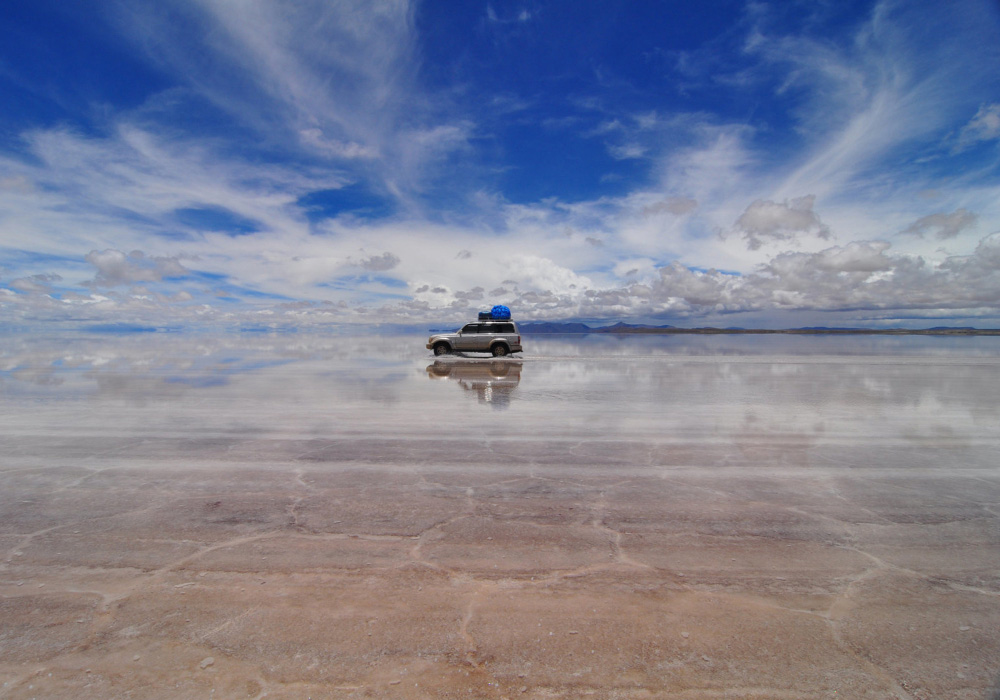
Here are some wonders of the wet season:
- Mirror effect: The flats reflect the sky perfectly, creating a surreal and magical experience.
- Fewer crowds: There are usually fewer tourists, giving you a more intimate experience.
- Unique photos: The mirror effect allows for breathtaking and unique photographs.
Travelling during the wet season requires some preparation. Roads can be flooded, and access might be limited. A sample itinerary might look like this:
| Time | Activity |
|---|---|
| Morning | Reflective photography |
| Midday | Relax and enjoy the views |
| Afternoon | Visit Isla Incahuasi |
| Evening | Sunset and stargazing |
Both seasons offer unique experiences at Uyuni Salt Flats. Choose the one that best fits your interests and enjoy the magic of this incredible destination.
Getting there
The Uyuni Salt Flats in Bolivia are a breathtaking destination. This natural wonder offers stunning views and unforgettable experiences. But first, you need to know how to get there. In this section, we'll guide you through the best ways to reach Uyuni and plan your route effectively.
Transportation options
There are several ways to reach the Uyuni Salt Flats. Here are the main transportation options:
- By air: The fastest way to get to Uyuni is by flying. The Uyuni Airport (Joya Andina Airport) receives direct flights from La Paz and other major cities in Bolivia. The flight from La Paz to Uyuni takes about an hour.
- By bus: Buses are a popular choice for budget travellers. Several bus companies operate routes from La Paz, Potosi, and Sucre to Uyuni. Overnight buses are available, and the journey can take between 8 to 12 hours, depending on your starting point.
- By train: Trains offer a scenic and comfortable way to travel. The train service, known as Expreso del Sur, connects Oruro to Uyuni. The train ride is about 7 hours long and provides a unique view of the Bolivian landscape.
- By car: Renting a car is an option for those who prefer flexibility. You can drive from La Paz to Uyuni, which takes around 9 to 10 hours. Be sure to check road conditions and have a reliable map or GPS.
Planning your route
Here are some tips:
- Check flight schedules: If you're flying, make sure to book your flights in advance. Flights can fill up quickly, especially during peak travel seasons.
- Book bus or train tickets early: For buses and trains, it's wise to purchase tickets ahead of time. This ensures you get a seat and can choose a convenient departure time.
- Consider weather conditions: The weather can impact travel. The rainy season (November to March) might affect road conditions. The dry season (April to October) is generally more predictable.
- Plan for altitude: Uyuni is at a high altitude (over 3,600 meters). Spend a few days in La Paz or another high-altitude city to acclimate before heading to Uyuni.
- Map Your Route: If driving, ensure you have a clear route planned. GPS devices can be unreliable in remote areas, so having a physical map is helpful.
Having a well-thought-out plan will make your journey to the Uyuni Salt Flats enjoyable and stress-free. With these tips, you're ready to embark on an adventure to one of Bolivia's most stunning landscapes.
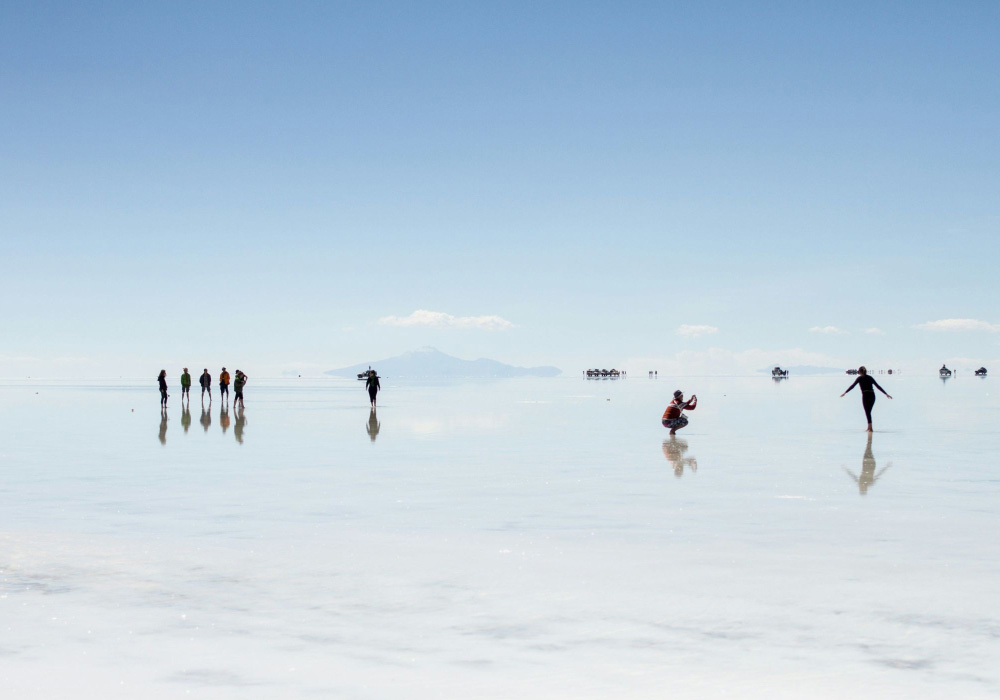
Exploring the flats
Discovering the Uyuni Salt Flats is a surreal experience. The vast white expanse stretches as far as the eye can see. This unique landscape offers an adventure like no other. Let's dive into exploring the flats.
Walking on the salt
Walking on the Uyuni Salt Flats feels like stepping on a giant mirror. The surface is hard and crunchy underfoot. This is due to the thick crust of salt.
During your walk, you will notice hexagonal patterns on the ground. These patterns are natural formations created by the drying salt. They add to the beauty of the landscape.
Here are some tips for a comfortable walk:
- Wear sturdy shoes. The salt can be rough.
- Bring sunglasses. The salt reflects sunlight and can be very bright.
- Stay hydrated. The high altitude can cause dehydration.
- Use sunscreen. The sun can be intense.
Walking on the salt flats is a unique way to connect with nature. You can feel the crunch beneath your feet. You can hear the sound of silence. It's a peaceful and reflective experience.
Photography tips
The Uyuni Salt Flats are a photographer's dream. The endless white expanse creates amazing photo opportunities. Here are some tips to get the best shots:
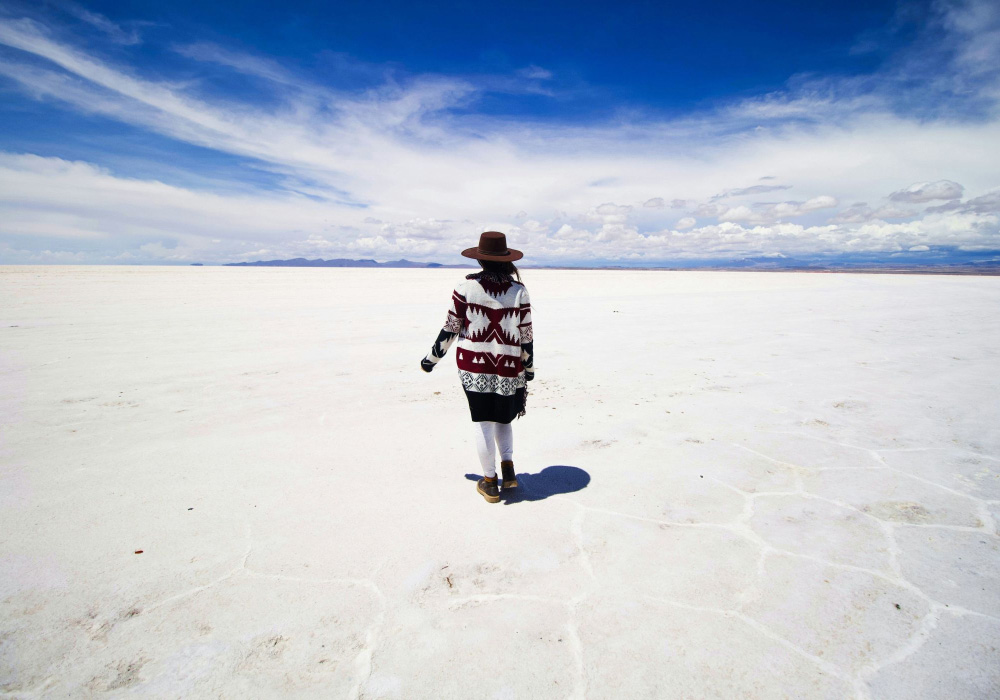
Use the reflections: After rain, the flats become a giant mirror. Capture the sky reflecting on the ground. This creates stunning, symmetrical images.
Play with perspective: The vastness of the flats allows for creative shots. Place objects or people at different distances. This creates fun optical illusions.
Golden hours: Sunrise and sunset are the best times for photography. The light is soft, and the colours are vibrant. This enhances the beauty of your photos.
Equipment:
- Bring a tripod. It helps with stability, especially for long exposure shots.
- Use a polarizing filter. It reduces glare and enhances colours.
- Carry extra batteries. The cold can drain them quickly.
Remember to experiment and have fun. The Uyuni Salt Flats are a unique canvas. Let your creativity flow and capture the magic of this incredible place.
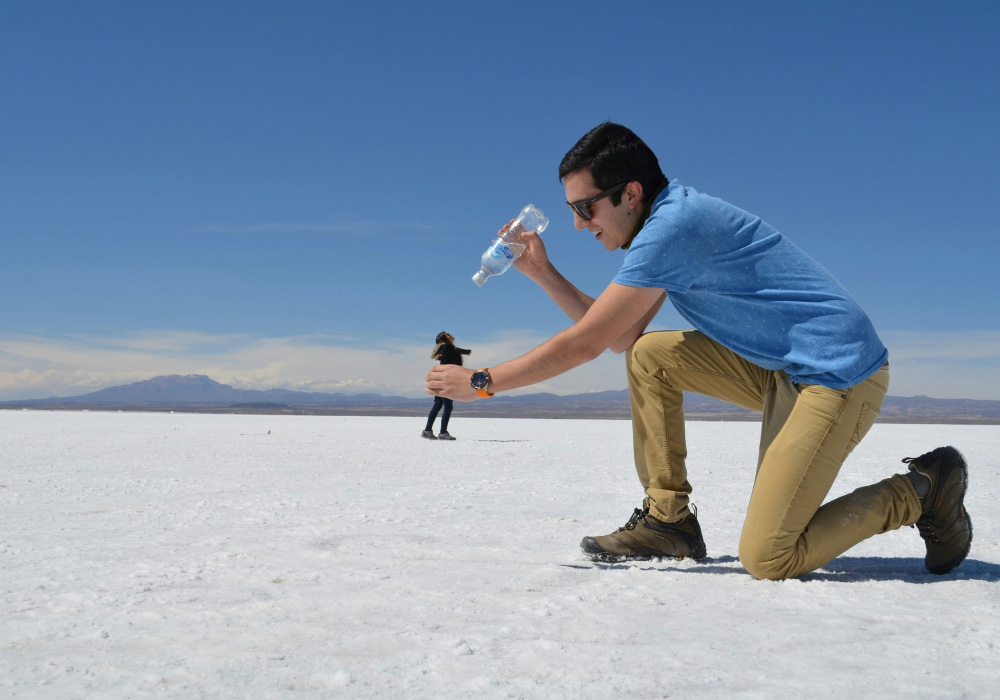
Nearby attractions
Introduction paragraph about Discovering Uyuni Salt Flats in Bolivia and Nearby Attractions...
Train Graveyard
One of the most fascinating nearby attractions is the Train Graveyard. Located just 3 kilometres from Uyuni town, this unique spot is a must-see. The area features old, rusting locomotives that once served Bolivia's mining industry. Now, they rest in the desert, creating an eerie yet captivating scene.

Here are some interesting points about the Train Graveyard:
- It is home to dozens of vintage trains from the early 20th century.
- The trains were left to rust after the mining industry collapsed in the 1940s.
- Visitors can climb on and explore the trains, making it a great spot for photography.
- The site offers a glimpse into Bolivia's industrial history.
For those who love photography, the contrast between the old trains and the stark desert backdrop is perfect. The Train Graveyard is also an excellent place for kids and adults to explore and learn. The site is open to the public, and there is no entrance fee, making it an accessible and educational experience for all.
Incahuasi Island
Another nearby attraction worth visiting is Incahuasi Island. This island, located in the heart of the Salar de Uyuni, offers a surreal experience. Covered in giant cacti, some of which are over 1,000 years old, the island provides a stark contrast to the salt flats.
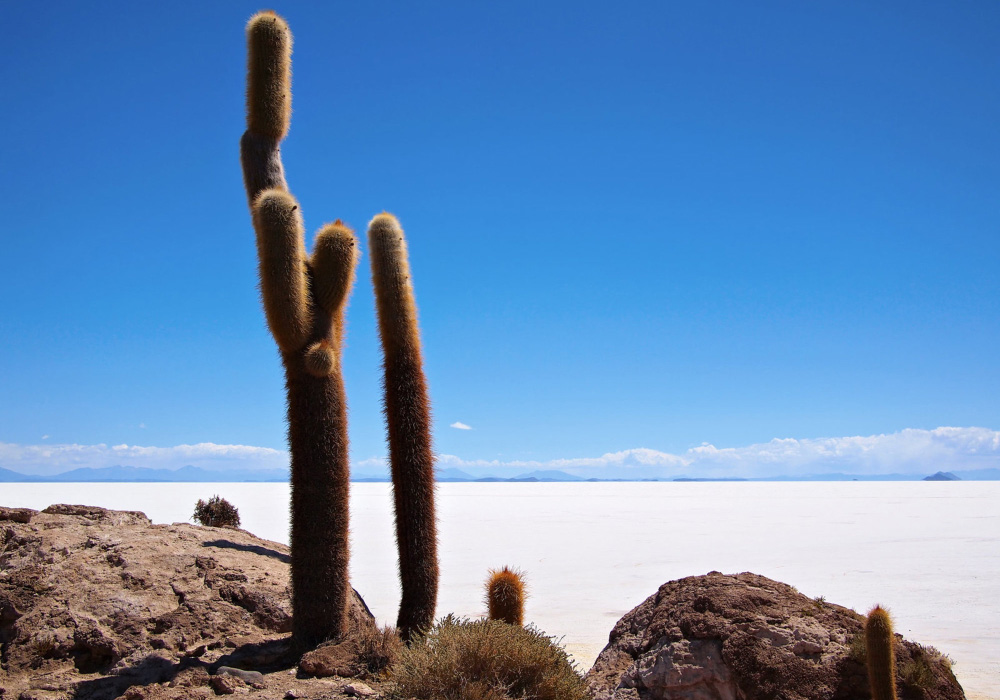
Key highlights of Incahuasi Island include:
- Stunning 360-degree views of the salt flats.
- A unique ecosystem with various plant and animal species.
- Opportunities for hiking and exploration.
- Historical sites, including ancient coral formations.
The island is accessible by a short drive from Uyuni town. Many tours include a stop at Incahuasi Island, allowing visitors to enjoy its beauty. The island offers a unique blend of both for those who love nature and history. It is also a fantastic spot for taking panoramic photos of the salt flats.
Visiting Incahuasi Island provides an enriching experience, combining natural beauty with historical significance. Whether you are hiking up to see the views or exploring the flora and fauna, the island offers something for everyone.
Cultural insights
More than a stunning landscape, the Uyuni Salt Flats serve as a gateway to rich cultural traditions. Visitors to this stunning location can learn about the unique traditions and lifestyles of the local communities. This exploration offers a deeper appreciation of the region's history and the people who call it home.
Local communities
The local communities around the Uyuni Salt Flats are mainly indigenous. The most prominent group is the Aymara people. They have lived in the region for centuries. Their culture and traditions are deeply connected to the land.
These communities have a unique way of life. They have adapted to the harsh environment of the salt flats. Their homes are often built with salt blocks, providing insulation against extreme temperatures. You can see their traditional clothing, which includes bright, woven fabrics. These clothes are both functional and beautiful.
Here are some key aspects of the local communities:
- Language: The primary language spoken is Aymara, although many also speak Spanish.
- Economy: Many locals work in salt extraction and tourism. They also engage in agriculture and livestock farming.
- Food: Traditional dishes include quinoa, potatoes, and llama meat. These foods are both nutritious and adapted to the high-altitude environment.
Engaging with these communities provides a unique opportunity to learn about their way of life. Visitors can participate in cultural exchanges and support local businesses. This interaction helps preserve their traditions and boosts the local economy.
Traditional practices
Traditional practices in the Uyuni region are rich and varied. They reflect the deep connection of the Aymara people to their land and history. These practices are often passed down through generations.
One of the most essential traditional practices is the celebration of Pachamama, the Earth Mother. This ancient ritual involves offering Pachamama food, coca leaves, and alcohol. It is a way to show respect and gratitude to the Earth for its bounty.
Another significant practice is the use of traditional medicine. The Aymara people rely on local plants and herbs for healing. They have a deep knowledge of the medicinal properties of these plants. This knowledge is often shared by community elders, who are respected for their wisdom.
Traditional weaving is also a vital practice. Aymara women create intricate textiles using ancient techniques. These textiles are not only beautiful but also tell stories and convey cultural symbols. Visitors can often see demonstrations of this art and even purchase handmade items as souvenirs.
Participating in these traditional practices offers a deeper understanding of the Aymara culture. It allows visitors to connect with the history and spiritual beliefs of the region. These experiences are truly enriching and memorable.
Adventure activities
Discovering Uyuni Salt Flats in Bolivia is a dream for many travellers. This unique destination offers a range of adventure activities that will leave you in awe. From thrilling 4x4 tours to mesmerizing stargazing experiences, there's something for every adventurer. Let's dive into some of the most exciting activities you can enjoy in this breathtaking landscape.
4x4 tours
One of the best ways to explore the vast expanse of the Uyuni Salt Flats is through a 4x4 tour. These tours provide an exciting and comfortable way to see the most iconic spots. Here are some highlights:
- Visit the Train Cemetery: Start your adventure by exploring the eerie remnants of old trains.
- Explore Incahuasi Island: Marvel at the giant cacti and stunning panoramic views.
- See the Salt Hotel: Stay in a unique hotel built entirely from salt blocks.
The 4x4 tours often include a knowledgeable guide who will share fascinating facts and stories about the area. The tours are typically available in half-day, full-day, or multi-day packages. Here's a quick comparison of the different options:
| Tour Type | Duration | Highlights |
|---|---|---|
| Half-Day Tour | 4-5 hours | Train Cemetery, Salt Flats |
| Full-Day Tour | 8-10 hours | Train Cemetery, Incahuasi Island, Salt Flats |
| Multi-Day Tour | 2-3 days | Train Cemetery, Incahuasi Island, Salt Hotel, Lagoons |
Whether you choose a short trip or a longer adventure, the 4x4 tours are an unforgettable way to experience the Uyuni Salt Flats.
Stargazing experiences
The Uyuni Salt Flats are not only stunning during the day but also offer a magical experience at night. Stargazing here is unlike anywhere else in the world. The clear skies and high altitude provide perfect conditions to see countless stars. Here are some reasons why stargazing in Uyuni is a must:
- Crystal Clear Skies: Minimal light pollution makes the stars shine brightly.
- Milky Way Views: See the Milky Way in all its glory.
- Reflection Effect: During the rainy season, the salt flats become a giant mirror, reflecting the sky.
For the best stargazing experience, consider joining a guided night tour. These tours usually include:
- Astronomy expert to explain the constellations and stars.
- Professional telescopes for a closer look at celestial objects.
- Warm beverages and blankets to keep you cozy.
Some tours even offer photography tips to capture the beauty of the night sky. Whether you're an avid stargazer or just want to experience something new, the stargazing tours in Uyuni are a must-try activity.
Travel tips
To make the most of your visit, it's important to be well-prepared. Here are some essential travel tips to ensure your trip is safe and enjoyable.
Packing essentials
The weather can be unpredictable, and the environment is harsh. Here are some key items to include:
- Warm clothing: Temperatures can drop significantly, especially at night—pack layers, including a warm jacket, gloves, and a hat.
- Sun protection: The sun's rays are strong in the high-altitude environment. Bring sunscreen, sunglasses, and a wide-brimmed hat.
- Comfortable footwear: You'll be doing a lot of walking. Sturdy, comfortable shoes are a must.
- Water and snacks: The area is remote, and amenities are limited. Carry plenty of water and some high-energy snacks.
- Camera: The salt flats offer incredible photo opportunities. Don't forget extra batteries and memory cards.
- First aid kit: A basic first aid kit can be a lifesaver. Include band-aids, antiseptic wipes, and any personal medications.
- Reusable water bottle: Stay hydrated while being eco-friendly.
Safety considerations
Your safety is paramount while exploring the Uyuni Salt Flats. The environment is unique, and certain precautions are necessary:
- Altitude sickness: The salt flats are at a high altitude. Take it easy, drink plenty of water, and consider altitude sickness medication.
- Travel insurance: Ensure you have travel insurance that covers high-altitude activities and remote locations.
- Local guides: Hiring a local guide can enhance your experience and ensure safety. They know the area well and can navigate the challenging terrain.
- Weather awareness: The weather can change rapidly. Stay informed about the forecast and be prepared for sudden changes.
- Vehicle safety: If driving, ensure your vehicle is in good condition. Have a spare tire, extra fuel, and a map.
- Communication: Mobile service is limited. Carry a satellite phone or inform someone of your itinerary.
- Respect nature: The salt flats are fragile. Stick to designated paths and minimize your environmental impact.
By considering these safety tips, you can have a safe and memorable journey through the Uyuni Salt Flats.
Conclusion
The Uyuni Salt Flats are a destination that captivates travellers with their breathtaking landscapes and fascinating geological history. Whether you visit during the dry season to witness the endless white salt formations or the rainy season to experience the world's largest natural mirror, the scenery is guaranteed to be unforgettable. Beyond their visual appeal, the salt flats play a vital role in Bolivia’s economy, with their vast lithium reserves making them a key resource in the modern world. Scientists and geologists continue to study this remarkable location, uncovering its geological secrets and potential impact on future technologies.
Visiting Uyuni is more than just a sightseeing experience. It is a journey that offers adventure, cultural discovery, and a deep connection to nature. Travellers can explore ancient traditions, interact with Indigenous communities, and take part in exciting excursions such as 4x4 tours, hiking, and stargazing under some of the clearest skies in the world. The magic of Uyuni is timeless, and with proper planning, anyone can embark on an adventure that will create memories to last a lifetime. Whether you seek adventure, solitude, or inspiration, the Uyuni Salt Flats stand as one of the world’s most extraordinary natural wonders.

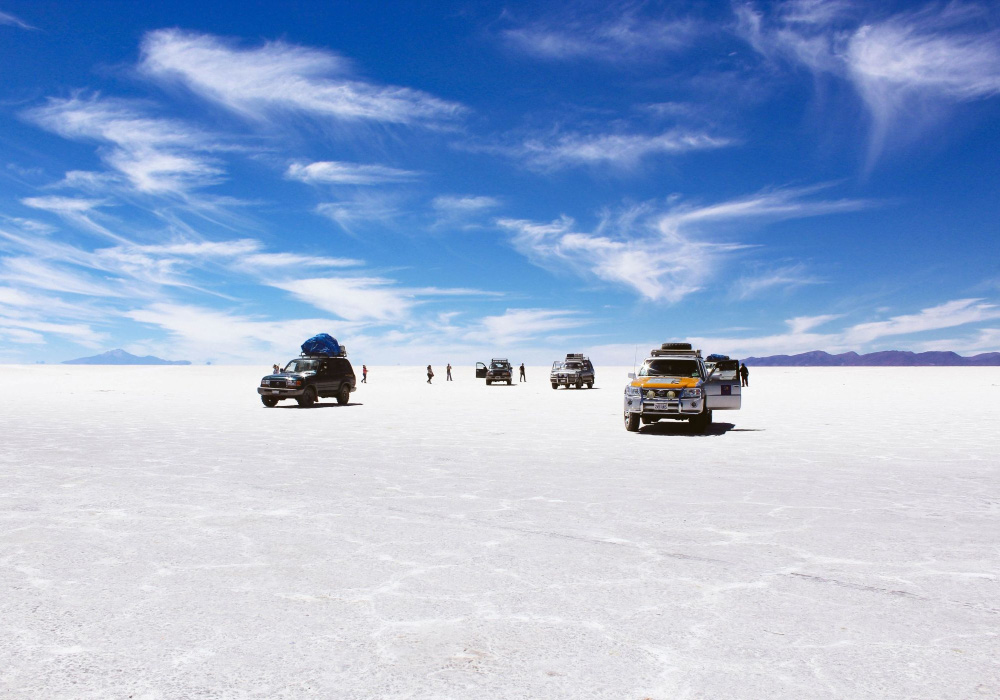

Comments powered by CComment